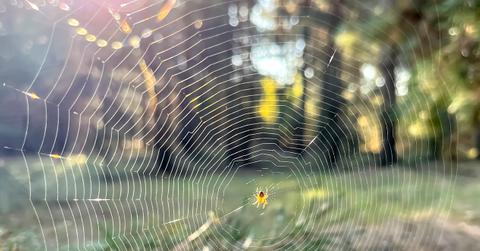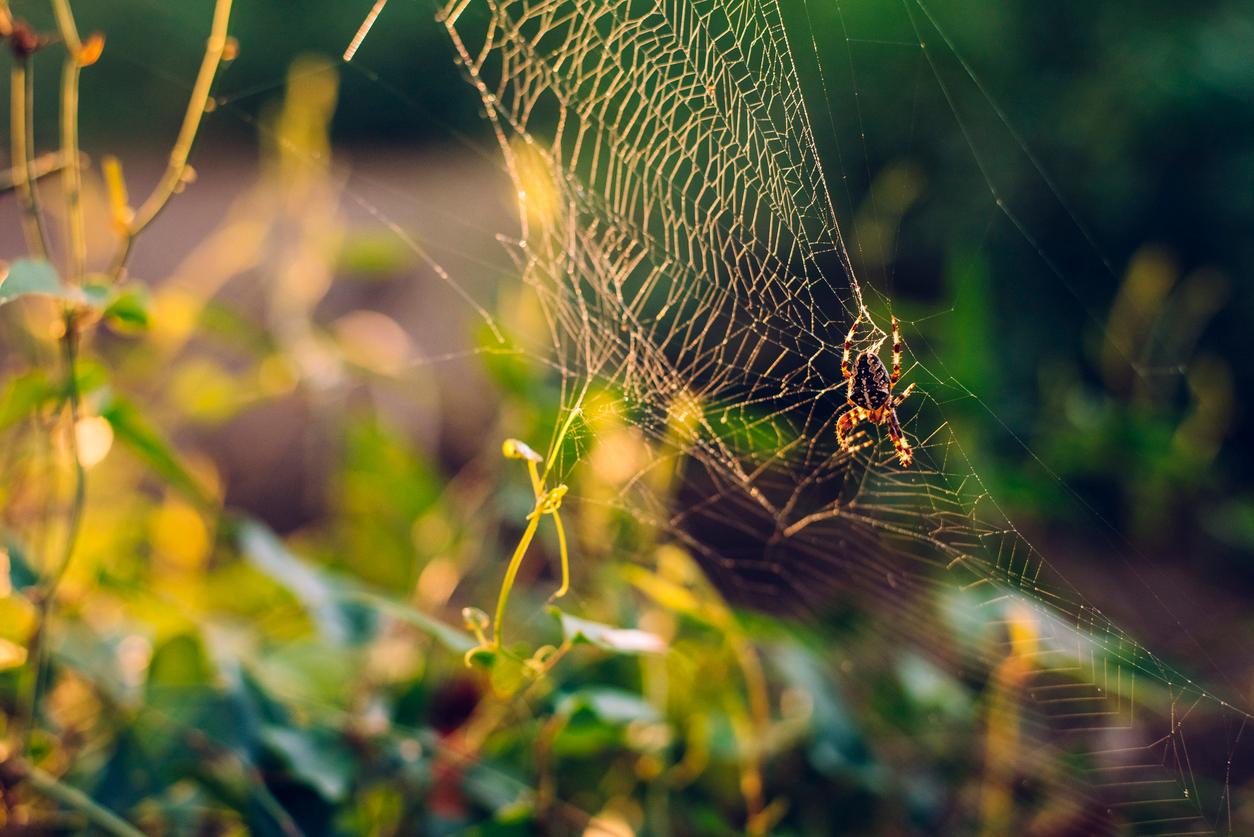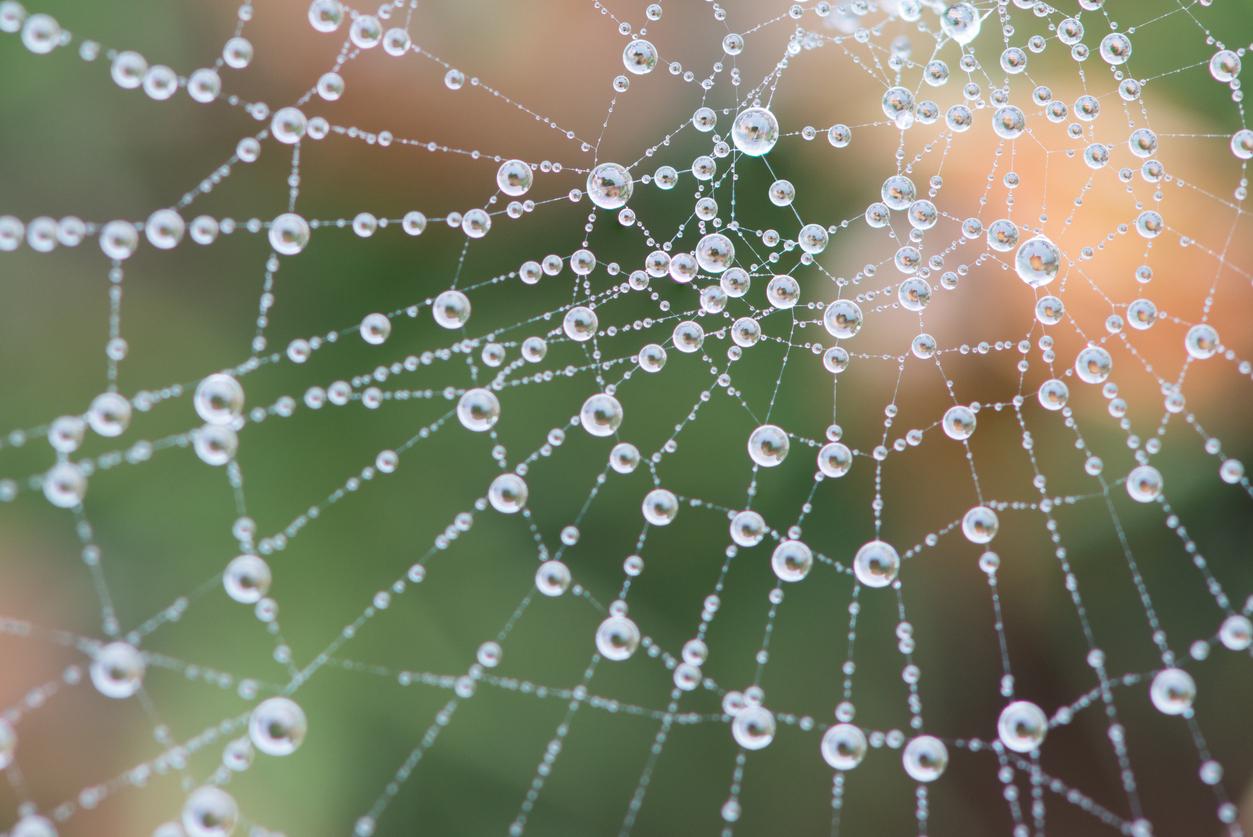Why We Don't Harvest Spider Silk, From the Ethical to the Logistical
There is actually one notable garment made of spider silk.
Published Oct. 1 2024, 3:50 p.m. ET

If you've ever accidentally walked into a spider's web, you know the adhesive strength and unique feeling of the silk from the web as you frantically try to get the material off of your body.
Recognizing the innate strength of such a material, though, scientists over the years have thought to harvest spider silk for various industrial uses. However, just as silk harvested from silkworms is a byproduct of wildly cruel processes, ethical concerns arise when the topic of spider silk is mentioned.
Are there any other reasons why we don't harvest spider silk? Could a network of overworked spiders spinning webs with silk ready to harvest logistically work, with all ethics ignored? Let's explore what spider silk actually is, if harvesting it has ever actually been done in history, and other important facts to know.

What is spider silk?
According to published research in the National Center for Biotechnology Information, spider silk consists of proteins (just as silkworm silk does) but which features tensile strength similar to steel. It is no wonder, then, why spider silk has been the subject of scientific curiosity for thousands of years, per the research article.
Per the published research, compared to Kevlar, spider silk threads can absorb threefold the energy and still remain resilient and elastic.
According to Hamilton Caster & Mfg. Co., spider silk is, pound for pound, among the strongest and most fascinating materials on the planet, with the tensile strength of steel and rubber-like stretchiness. Spiders themselves utilize their silk webs to catch prey, court female spiders, and more, per National Geographic.
“Spider silk is incredibly strong and flexible,” University of Toronto Scarborough Arachnologist Catherine Scott tells National Geographic. “It also tends to be very clean and have anti-microbial properties, because spiders don’t want molds and microbes growing on their webs.”
For a number of reasons, spider silk outperforms both natural and synthetic fibers, making it a highly desirable material to turn into fabric.

Why don't we harvest spider silk?
Producing spider silk is a massive undertaking, and even that is an understatement. An astounding 23,000 spiders are needed to produce a single ounce of golden spider silk, per the Museum of Islamic Art.
For comparison, per a PieceWork Magazine article, a French Jesuit priest and entomologist named Jacob Paul Camboué attempted to build a device in the 1800s that would harvest the silk from 25 spiders at a time. Eventually, per the article, the process was considered too much work.
Building such a contraption is a logistical problem requiring much work for comparatively little output. It also requires finding and trapping an unfathomably large amount of spiders to produce a large enough yield, which could have equally large ecological consequences.
The ethics of harvesting silk from spiders in a way that wouldn't harm them — as the PieceWork Magazine article acknowledges Camboué attempted to do — is a mightily difficult one.
Spider silk has been turned into a luxurious golden-yellow fabric:
According to PieceWork Magazine, Simon Peers and Nicholas Godley spent five years collecting the silk from more than 1 million golden orb spiders. The result was an 11-foot-by-4-foot, 2.6 pound golden-yellow fabric. According to the London-based Victoria and Albert Museum, the project yielded a shawl and cape piece, which is the largest (known) cloth items composed of spider silk material.
The luxurious fabrics involved a massive amount of labor from spider collectors, those who spun, weaved, and embroidered the threads, and more. The shawl and cape were displayed in the London-based museum in 2012 and were on display in the Museum of Islamic Art in Qatar from March through June 2024.